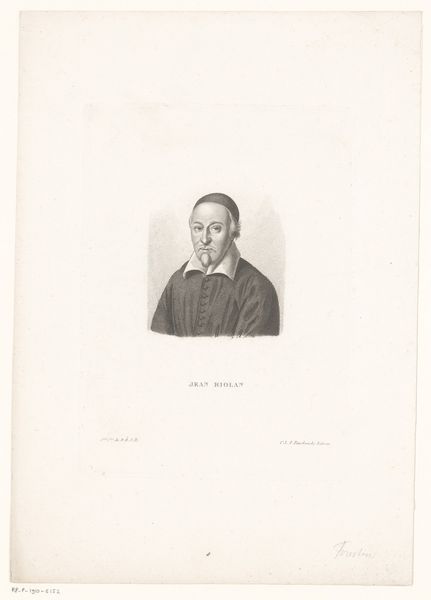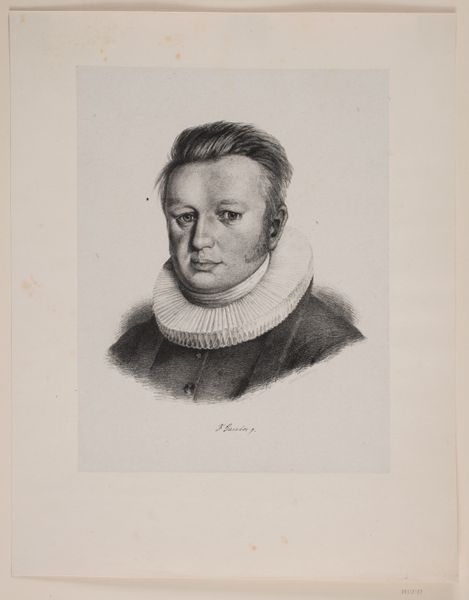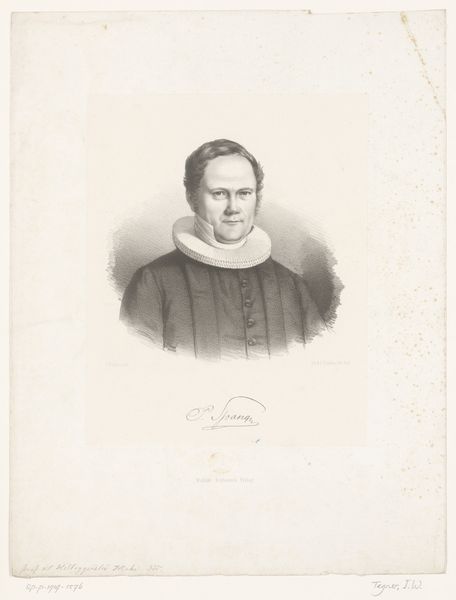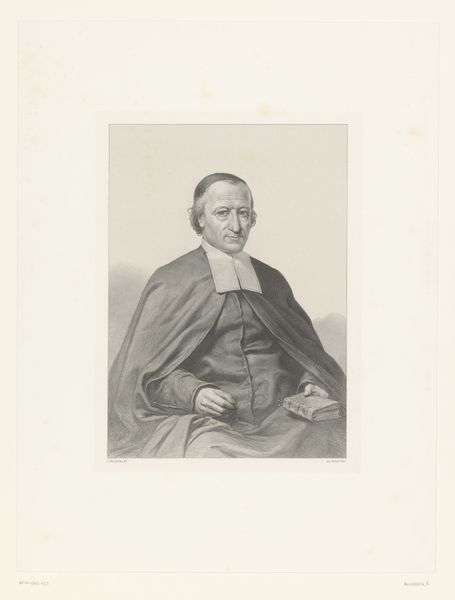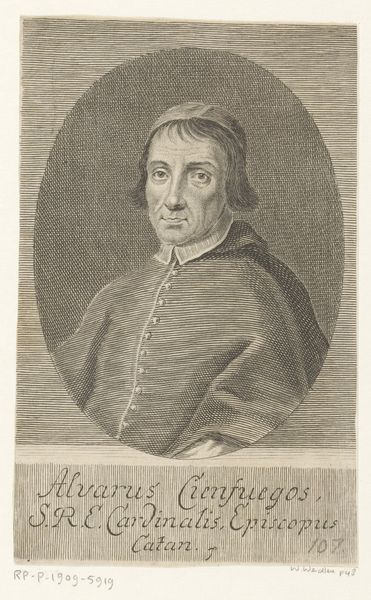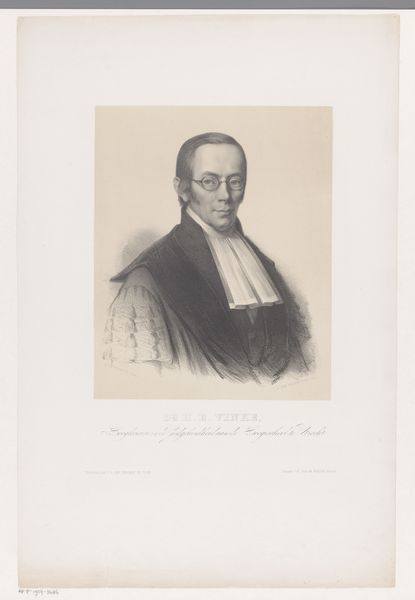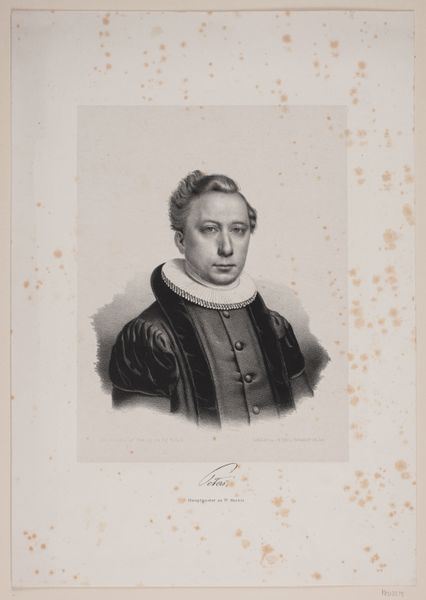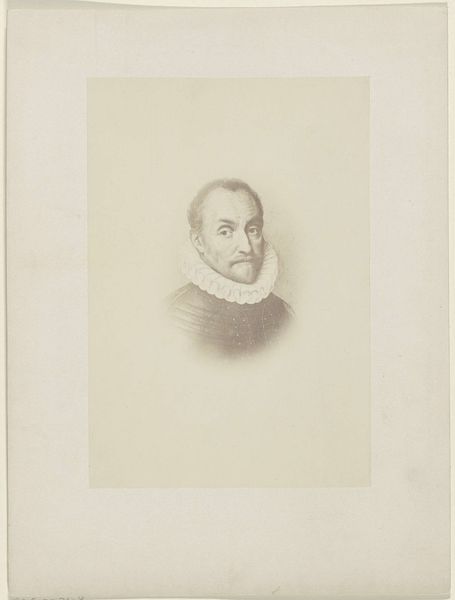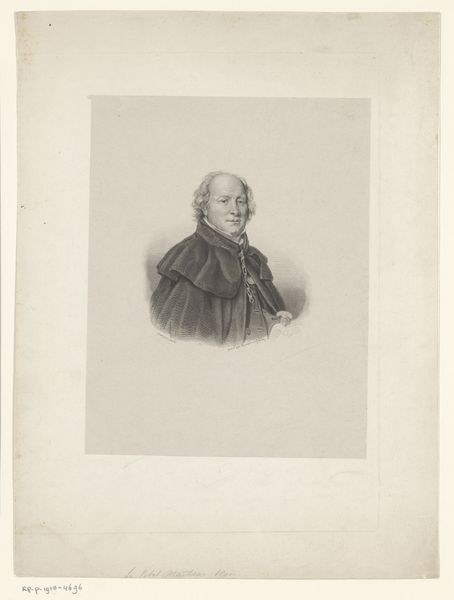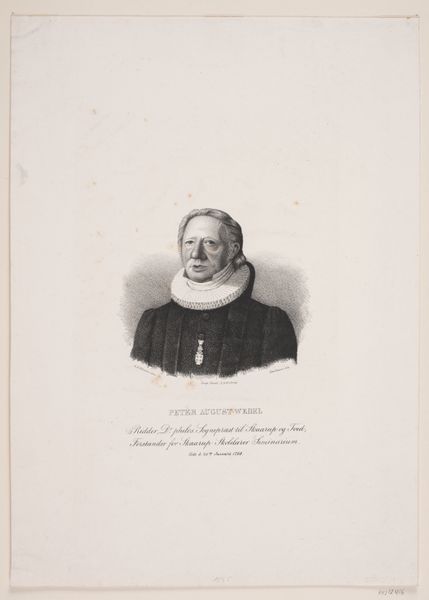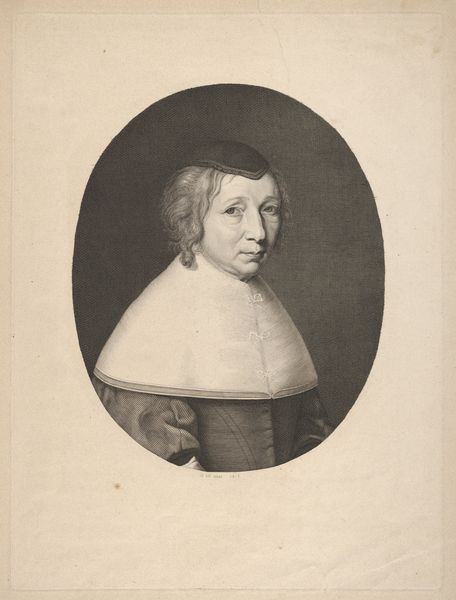
lithograph, print
#
portrait
#
lithograph
# print
#
realism
Dimensions: 460 mm (height) x 336 mm (width) (bladmaal)
Curator: Welcome. We're now standing before a lithograph dating from 1847, a portrait of Wilhelm Andreas Wexels. The artwork is part of the collection at the SMK, Statens Museum for Kunst. Editor: My first thought? Stoic. There’s an intensity, almost a severity, in his gaze. And that ruff! Quite the statement. It's a very precise drawing and it radiates a powerful and enigmatic aura. Curator: Indeed. Lithography allowed for relatively inexpensive reproduction, which made portraits like these vital for solidifying the social standing of individuals. Portraits affirmed status, power, and professional role. This one captures Wexels, who was an important religious figure. Editor: It makes me think about the weight of representation, you know? All those tiny marks creating an image designed to project authority. But behind that seriousness, I wonder, what were his dreams, his doubts? There’s a melancholy hiding there too, perhaps? Curator: Portraits, especially printed ones, offered access, to a broader public—a controlled access. Wexels' status as a theologian was intrinsically linked to the images circulated of him. Realism as a style enhanced this, by suggesting truth. Editor: So, the clothing is the real deal and so is his face. It makes him tangible somehow, but then he's distanced by the seriousness of this style. I keep wanting to break through that facade, find the glitch. Curator: The circulation of these portraits, alongside Wexels' writing, allowed him to perform his role on a grander stage. He was constantly being evaluated and portraits like this were the visual reference point. It's more than just representation; it's about the active making of a public image. Editor: That contrast in the clothing...dark and flowing juxtaposed with the solid, bright ruff, the rigid circle of it—there’s a tension there that fascinates me. And the light catches that collar...it's like a halo. He seems interesting despite, or perhaps because of, that tight little smile. Curator: That contrast emphasizes the clarity of his moral standing, and the ruff was traditional for clergy at the time, which connects directly to religious structures. This image is an interesting look into societal hierarchy and its impact on an individual. Editor: Agreed. These images remind us that portraiture isn’t passive. It's about image control, persona creation, and the constant negotiation between inner and outer worlds, whether of an individual or society. Curator: Absolutely. A study of the images in the national gallery reveals stories of politics, identity and society itself. Thank you for your thoughtful perspectives.
Comments
No comments
Be the first to comment and join the conversation on the ultimate creative platform.
